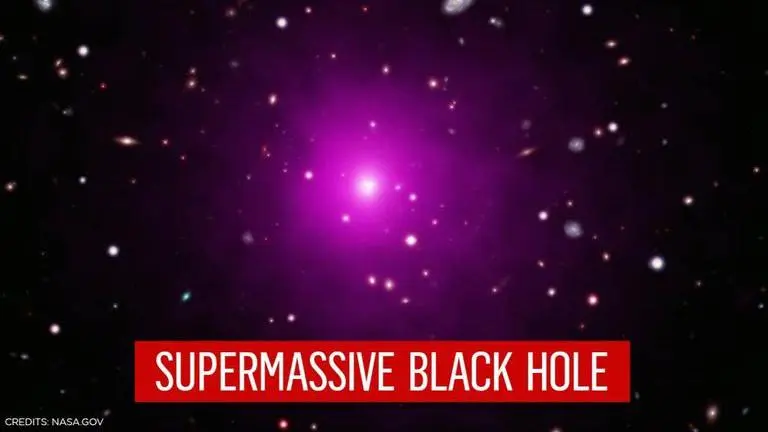Updated 10 January 2021 at 16:42 IST
'Galactic mystery': Astronomers stunned by missing supermassive black hole
The scientists are stunned by a missing supermassive black hole which should usually be expected to be in the centre of a distant galaxy.
- Science News
- 2 min read

Researchers of various North American Universities have spotted something unusual about cluster galaxy A2261-BCG. The scientists are stunned by a missing supermassive black hole which should usually be expected to be in the centre of a distant galaxy. According to the reports by The Sky, scientists believe that this is the first-ever example of "recoiling" black hole, which is, a black hole which was separated from the centre of the galaxy by a powerful force and is now flying freely and mysteriously in space.
The supermassive black hole
A2261-BCG, which is located about 2.6 billion light-years from Earth was studied by Dr Gultekin. The Hubble Telescope revealed that it has a large and flat stellar core. New observations were captured by the team using the Chanda X-ray and it was then confirmed that there are no X-ray emissions from the centre of the galaxy. Not even in any of the four off-centre stellar knots. “Despite searching with NASA's Chandra X-ray Observatory and Hubble Space Telescope, astronomers have no evidence that a distant black hole estimated to weigh between 3 billion and 100 billion times the mass of the Sun is anywhere to be found”, read a blog by NASA.
In a separate incident, Astronomer Kris Skellgren had noticed the lack of carbon monoxide (CO) in the light coming from stars near the galactic centre in 1990. It is commonly found in the upper atmospheres from the red giant stars. The report mentions that there are about 1000 missing red giants in the Milky Way’s centre. The red giant stage is the last phase of any sunlike star’s life. The stars turn red after swelling once they stop fusing hydrogen in the cores thus getting the name red giants. They are found all over the disk of the Milky Way.
Advertisement
Over the years, astronomers have come up with several ideas and theories most of which centre around Sagittarius A*. It is a supermassive black hole at the galactic centre. It weighs over 4.5 million times the mass of the sun. With such mass, Sagittarius A* can do a lot of things including killing the red giants. Therefore Sagittarius A* may rip apart the stars like red giants which wander too close to it. It is also possible that the red giants collide with other remnants near the Sagittarius A*.
Advertisement
(Image Credits: NASA)
Published By : Akanksha Arora
Published On: 10 January 2021 at 16:42 IST
